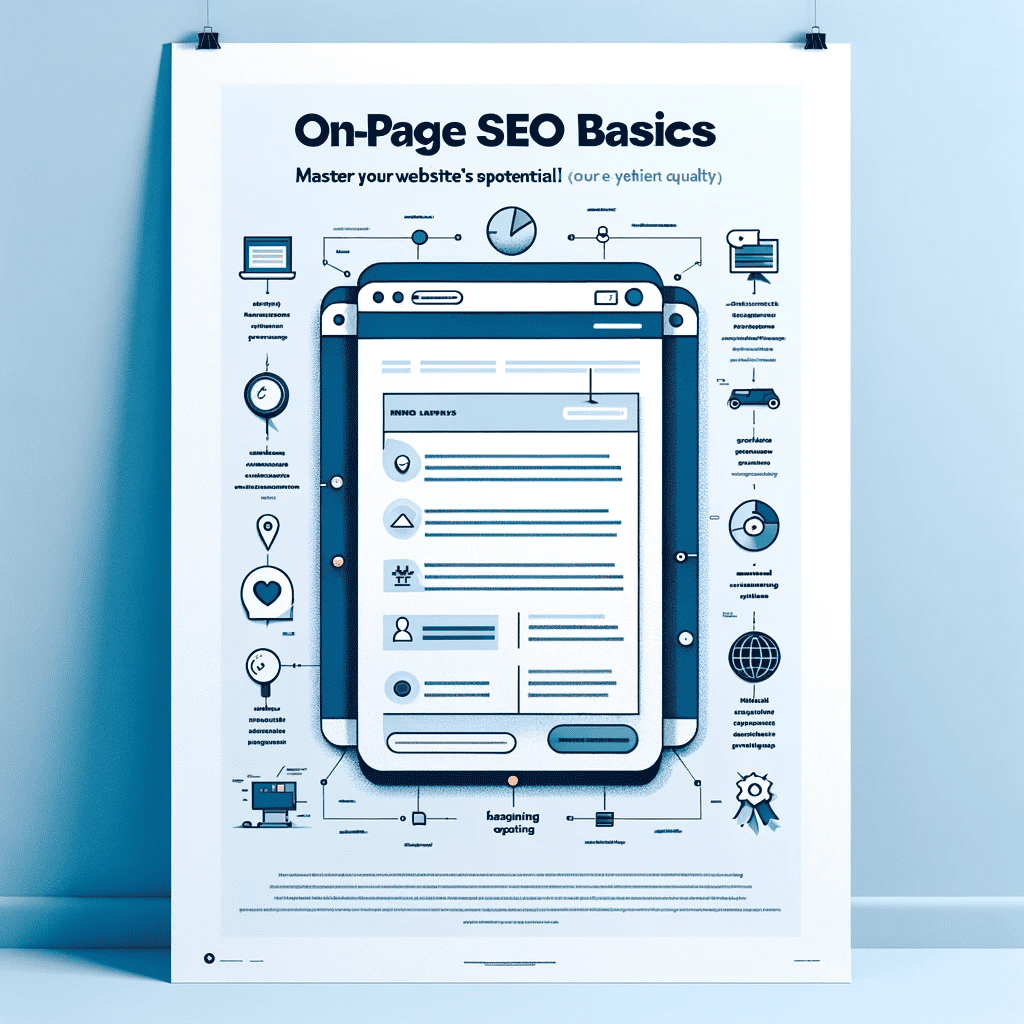On-Page SEO Basics for Beginners for 2024

Are you ready to boost your website’s visibility on search engines and drive more organic traffic? You’re in the right place! In this blog post, we’ll walk you through the fundamental steps of on-page SEO Basics. Don’t worry if you’re new to this – we’ll keep it simple and easy to follow.
What Is On-Page SEO? On-page SEO (Search Engine Optimization) refers to the optimization of individual web pages to improve their search engine rankings. It involves optimizing both the content and HTML source code of a page to make it more appealing to search engines like Google.
Let’s dive into the basics:
1. Keyword Research:
- Start by identifying relevant keywords related to your content. Use tools like Google Keyword Planner or Ahrefs to find keywords with good search volume and low competition.
- Choose a primary keyword and a few related keywords to target in your content.
2. Title Tags:
- Your title tag is the headline that appears in search engine results. Include your primary keyword naturally within the title tag.
- Keep it concise (around 60 characters) and engaging to entice clicks.
3. Meta Descriptions:
- Write a compelling meta description (around 160 characters) that summarizes your page’s content.
- Include your primary keyword and make it enticing for users to click.
4. Header Tags:
- Use header tags (H1, H2, H3, etc.) to structure your content. The H1 tag should contain your primary keyword and represent the main topic.
- Subheadings (H2, H3, etc.) should break down your content logically.
5. Content Optimization:
- Craft high-quality, informative, and engaging content. Use your primary keyword naturally throughout the text, but avoid keyword stuffing.
- Aim for a recommended word count relevant to your topic.
6. Image Optimization:
- Optimize images by reducing file size, using descriptive file names, and adding alt text that includes your keywords.
- Images should enhance your content and load quickly.
7. Internal Linking:
- Include internal links to relevant pages on your website. This helps users navigate and boosts SEO.
8. URL Structure:
- Create SEO-friendly URLs that reflect the content’s topic. Use hyphens to separate words.
9. Mobile-Friendly Design:
- Ensure your website is responsive and mobile-friendly. Google prioritizes mobile-friendly sites.
10. Page Speed: – Improve page load times by optimizing images, using browser caching, and reducing server requests.
11. User Experience: – Provide a great user experience with clear navigation, easy-to-read content, and a visually appealing layout.
12. Quality Backlinks: – While not directly on-page, building quality backlinks to your content can significantly boost your page’s authority and rankings.
Remember, on-page SEO is an ongoing process. Regularly update and improve your content to stay relevant and maintain or improve your rankings.
By following these on-page SEO basics, you’re well on your way to improving your website’s visibility and attracting more visitors. Don’t rush the process; take your time to create valuable content that both users and search engines will love. Happy optimizing!
